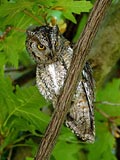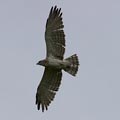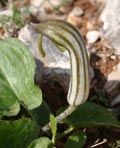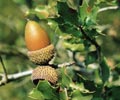Chios, Oinousses and Psara offer habitats to thousands of wild plants and animals. Only a small selection of these could be included on our seasonal wildlife posters for schools. Here are some more that we have found great images of. See if you can spot any of them as you move around the islands.
| ANIMALS |
|
|
 |
 |
 |
 |
 |
 |
 |
|
Tyto alba / Barn owl
The most common of the three species of owls on the islands, this ghostly predator glides on silent wings.
Photograph: Brian Cendro |
 |
 |
 |
 |
 |
|
Otus scops / Scops owl
A camouflage artist that is hard to see when perched among the branches of a pine tree because of its subtle grey markings.
Photograph: George Reszeter |
 |
 |
 |
 |
 |
|
Papilio machaon / Swallowtail butterfly
This large and attractive butterfly is a common sight during the summer months. Wild fennel (ìÜëáèñï) is one of its food plants.
Photograph: Tom Callen |
 |
 |
 |
 |
 |
|
Polygonia egea / Southern comma
The leaf-like wing shape is typical of this butterfly that feeds on nettles.
Photograph: Mike Taylor |
 |
 |
 |
 |
 |
|
Galerida crestata / Crested lark
Nests on the ground and favours open country where wildflower seeds are available. When breeding it also eats insects.
Photograph: Fraser Simpson |
 |
 |
 |
 |
 |
|
Erithacus rubecula / Robin redbreast
Males and females look alike and both defend a territory.
Photograph: Fraser Simpson |
 |
 |
 |
 |
 |
|
Mesobuthus gibbosus / Scorpion
The female protects her young by carrying them around on her back.
Photograph: Mike Taylor |
 |
 |
 |
 |
 |
|
Hemidactylus turcicus / Gecko
Has sticky toes and takes advantage of human presence by waiting near lights to catch insects at night.
Photograph: Richard Seaman |
 |
 |
 |
 |
 |
|
Circaetus gallicus / Short-toed eagle
One of the most common eagles of Chios, this hunter feeds mainly on snakes.
Photograph: Sudhir Shivaram |
 |
 |
 |
 |
 |
|
Larus audouinii / Audouin's gull
A rare gull that feeds only by fishing and not, like other gulls, by scavenging.
Photograph: Terje Kolaas |
 |
 |
 |
 |
 |
|
Carduelis carduelis / Goldfinch
Not only attractively coloured but also a fine songbird. Its pointed beak helps it to reach seeds deep inside thistle heads.
Photograph: Terje Kolaas |
 |
 |
 |
 |
 |
|
Lanius collurio / Red-backed shrike
Shrikes make a larder by sticking their catch on a thorn and leaving it until it is tender enough to eat. This one is a female.
Photograph: Dave Watts |
 |
 |
 |
 |
 |
|
Machimus setibarbus / Robber fly
The entomologist who first described this aggressive fly in 1849 stated it was typically to be found near Smyrna.
Photograph: Mike Taylor
|
 |
 |
 |
 |
 |
|
Decticus verrucivorus / Wart biter bush cricket
This cricket was spotted at the delta of the river Evros in northeastern Greece. We think it can also to be found in Chios. The long ovipositor at its tail end clearly indicates this one is a female.
Photograph: Fraser Simpson. |
 |
 |
 |
 |
 |
|
Iris Oratoria / Preying mantis
Females sometimes attack and eat the male after mating.
Photograph: Mike Taylor
|
 |
 |
 |
 |
 |
|
Gonepteryx Cleopatra / Cleopatra butterfly
The upper side of the wings is a vivid, bright yellow. Males have a more dramatically coloured orange forewing.
Photograph: Mike Taylor |
 |
 |
 |
 |
 |
|
Julodis onopordi / Jewel beetle
This is one of the wood-boring beetles of the Buprestidae family, admired in many cultures for the brilliant colours of their wing cases.
Photograph: Mike Taylor |
 |
 |
 |
 |
 |
|
Oedipoda miniata / Black-banded grasshopper
This handsome creature was seen at Kato Fana. One observer reported that when it is performing its courtship flight it sounds like a jazz musician “brushing” a drum!
Photograph: Mike Taylor |
 |
 |
| PLANTS |
|
 |
 |
 |
 |
|
Aristolochia tournefortii / Dutchman's pipe
The fragrant flowers are attractive to butterflies and other insects.
Photograph: Mike Taylor
|
 |
 |
 |
 |
 |
|
Clematis cirrhosa / Clematis virgin's bower
The blossoms of this vigorous climber eventually give way to clusters of hairy seed pods. Their appearance has given rise to one of its other common names – old man's beard. This picture was taken near Avgonima.
Photograph: Mike Taylor
|
 |
 |
 |
 |
 |
|
Crocus pulchellus / Balkan autumn crocus
An autumn flowering species, again photographed near Avgonima.
Photograph: Mike Taylor
|
 |
 |
 |
 |
 |
|
Cyclamen hederifolium / Hardy cyclamen
The flowers appear just before the ivy-shaped leaves in late summer or early autumn. Hardy cyclamen tolerates low temperatures and can often be found growing in the leaf mould that surrounds the foot of a tree.
Photograph: Mike Taylor |
 |
 |
 |
 |
 |
|
Quercus coccifera / Kermes oak
A common tree, usually taking the form of a low-growing shrub, whose bark has been used since ancient times for its anti-inflammatory and antiseptic properties. Each plant produces separate male and female flowers.
Photograph: Florenci Valles |
 |




